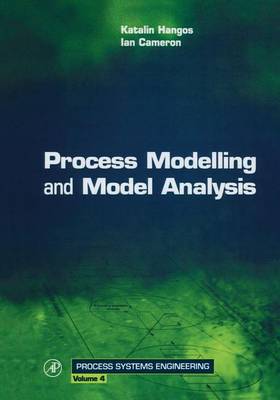Process Systems Engineering
2 primary works
Book 4
Process Modelling and Model Analysis describes the use of models in process engineering. Process engineering is all about manufacturing--of just about anything! To manage processing and manufacturing systematically, the engineer has to bring together many different techniques and analyses of the interaction between various aspects of the process. For example, process engineers would apply models to perform feasibility analyses of novel process designs, assess environmental impact, and detect potential hazards or accidents.
To manage complex systems and enable process design, the behavior of systems is reduced to simple mathematical forms. This book provides a systematic approach to the mathematical development of process models and explains how to analyze those models. Additionally, there is a comprehensive bibliography for further reading, a question and answer section, and an accompanying Web site developed by the authors with additional data and exercises.
To manage complex systems and enable process design, the behavior of systems is reduced to simple mathematical forms. This book provides a systematic approach to the mathematical development of process models and explains how to analyze those models. Additionally, there is a comprehensive bibliography for further reading, a question and answer section, and an accompanying Web site developed by the authors with additional data and exercises.
Book 6
Process Systems Risk Management provides complete coverage of risk management concepts and applications for safe design and operation of industrial and other process facilities. The whole life cycle of the process or product is taken into account, from its conception to decommissioning.
The breadth of human factors in risk management is also treated, ranging from personnel and public safety to environmental impact and business interruption. This unique approach to process risk management is firmly grounded in systems engineering. Numerous examples are used to illustrate important concepts -drawn from almost 40 years authors' experience in risk analysis, assessment and management, with applications in both on- and off-shore operations.
This book is essential reading on the relevant techniques to tackle risk management activities for small-, medium- and large-scale operations in the process industries. It is aimed at informing a wide audience of industrial risk management practitioners, including plant managers, engineers, health professionals, town planners, and administrators of regulatory agencies.
The breadth of human factors in risk management is also treated, ranging from personnel and public safety to environmental impact and business interruption. This unique approach to process risk management is firmly grounded in systems engineering. Numerous examples are used to illustrate important concepts -drawn from almost 40 years authors' experience in risk analysis, assessment and management, with applications in both on- and off-shore operations.
This book is essential reading on the relevant techniques to tackle risk management activities for small-, medium- and large-scale operations in the process industries. It is aimed at informing a wide audience of industrial risk management practitioners, including plant managers, engineers, health professionals, town planners, and administrators of regulatory agencies.

